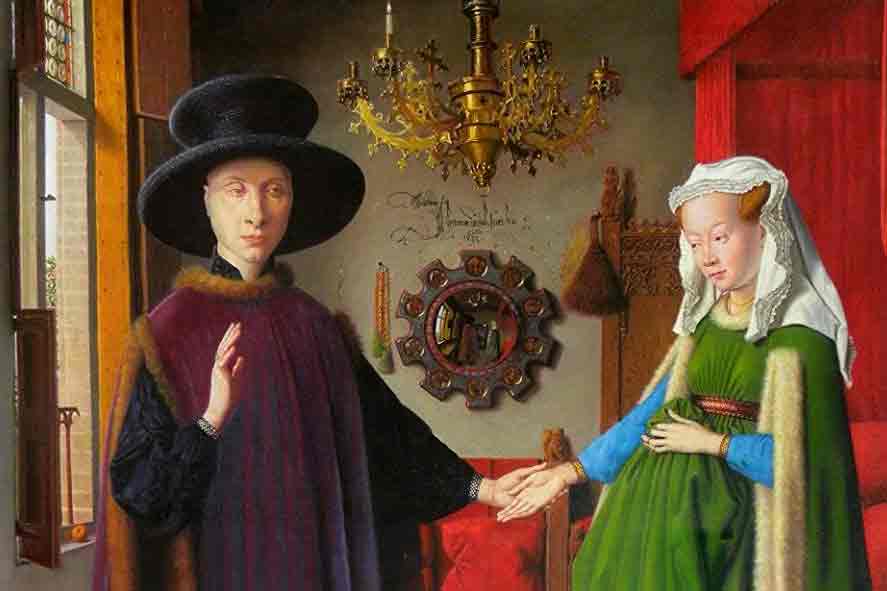The word Renaissance means “rebirth”. Following the Dark and Middle ages and their associated turmoil and stagnation, not to mention the Black Death, Europe experienced a rebirth of sorts with a rediscovery of math, philosophy, astrology, astronomy, science, and literature and art witnessed a great revival within the 200 years, i.e., from 1400 to 1600.

While many principal characteristics of renaissance art have been influencing the modern world, this phase had led towards a spiritual thinking wherein people began exploring the philosophy of humanism
With the advent of the printing press, knowledge was for the first time in over 1000 years accessible to people outside of the clergy, the noble, the aristocratic, and the royal.
Renaissance brought about several changes. And these are changes that are still influencing the modern world, even up till presently. But germane among its effect was the fact that at the time, it ushered the world into a phase of heightened spiritual thinking. A phase where people began to explore the philosophy of humanism.
Special attention was given to the classical eras in Greece and in Rome, which until the Renaissance were the pinnacle of human achievement.
Renaissance Art – A period of revival and creativity
A renewed passion for learning and for human achievement led to the influence of all of these new studies in the formation of greater art.
Renaissance was a period of greater learning and curiosity that led many learners and artists to develop and engage in new forms of art.
Renaissance brought about several changes. And these are changes that are still influencing the modern world, even up till presently. But germane among its effect was the fact that at the time, it ushered the world into a phase of heightened spiritual thinking. A phase where people began to explore the philosophy of humanism.
Florence, Italy was the birthplace of the Renaissance and that is the reason why many disciplines focused mainly on Italy.
The power of humanists during the Renaissance period was dominating and thus the church sought to become “patron” of the artists’ projects.
The creative ventures involving the church and the artists shot up due to the high education sponsored by the church and the wealthy merchants spending huge amounts of money on the paintings.
Renaissance art was instrumental in the change that the world experienced. Below are five of the characteristics of Renaissance Art that had a major influence on the world.
Top 5 Characteristics of Renaissance Art that Changed the World
1. A positive willingness to learn and explore
The onset of technology and new discoveries led artists and learners to seek more.
While the Western world saw simultaneous discoveries and innovations, the artists in Italy became more and more curious to explore the world and all the possible aspects of nature.
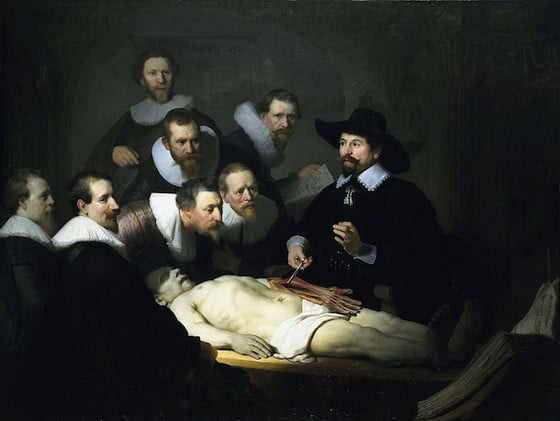
The discoveries in Europe included new sea routes, continents, and colonies along with new innovations in architecture, sculpting, and painting. They believed that revival of the classical antiquity could lead to a much worthy and standardized stake in that era.
2. Faith in the nobility of man- Humanism
Prior to Renaissance was the Renaissance Humanism which contributed immensely to the rise of the Renaissance.
Note that Renaissance Humanism is not the same as Humanism.
Humanism was a major offshoot, and characteristic of the Renaissance period. While the Renaissance Humanism was an intellectual movement that began in the 13th century. The major ideal of the philosophy was tied around the study of classical texts, and the alteration of these classical thinking by more contemporary ones. As in the 15th century, Renaissance Humanism had become the dominant form of education. It was so popular that it was divided into a range of sub-developments. Francesco Petrarch (1304-1374) is regarded as the Father of Italian Humanism, his contribution to the philosophy was quite huge.
Renaissance Humanism was very instrumental to the reign of the Renaissance. It was popular and predominant during the period. This was to the extent that the church had to support and even “patron” it.
Humanists shared the belief that God created humans with so many potentials and abilities, and to get the best of them, one has to dignify himself and esteem himself rightly. So they felt that they had the responsibility to act on this belief and make the most of it.
Through humanism, Art especially enjoyed the support of the church. The church began to finance and sponsor creative ventures and education. And with the high-rate of patronage from the wealthy royals, there was always a ready market for the paintings that were made.
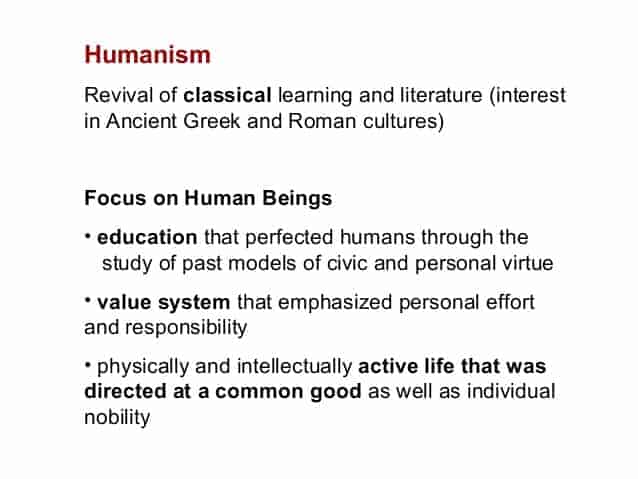
Intellectuals, artisans and common men concluded that the Church was never a responsible source for their behavior and beliefs towards God and fellow men and that they themselves are responsible for the actions.
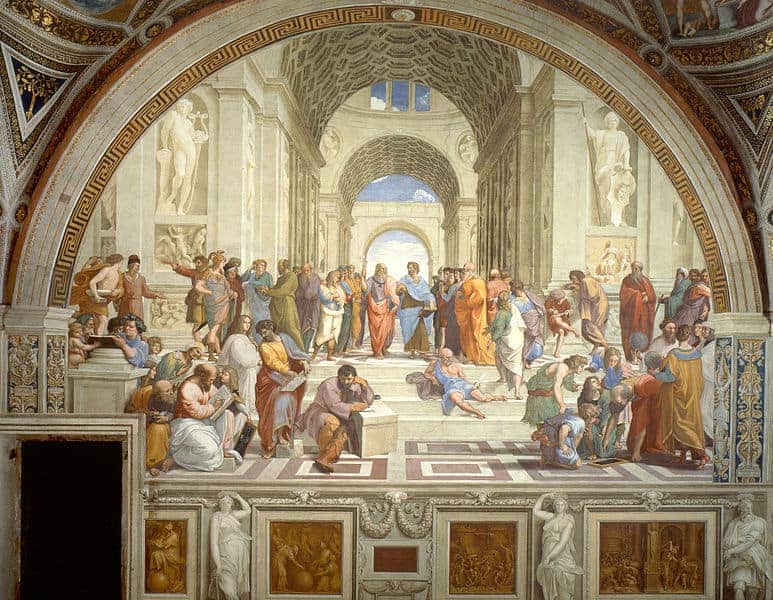
The parallel vision between religion and humanism was cleared and the esteem related to self-importance was thought upon. The magnificent Procession of the Magi, portrayed by Gozzoli along with companies, seeks a more regal face rather than a religious one.
3. The discovery and mastery of linear perspective
The revival in math and proportions led to the innovations of two major systems: the use of linear perspective and the introduction of the vanishing point – This is considered to be one of the revolutionary characteristics of renaissance art
This was created by the famous architect of that time, Filippo Brunelleschi.
He used the innovations in math to create a linear perspective using parallel lines, a horizon line and a vanishing point to realistically portray space and depth in art.
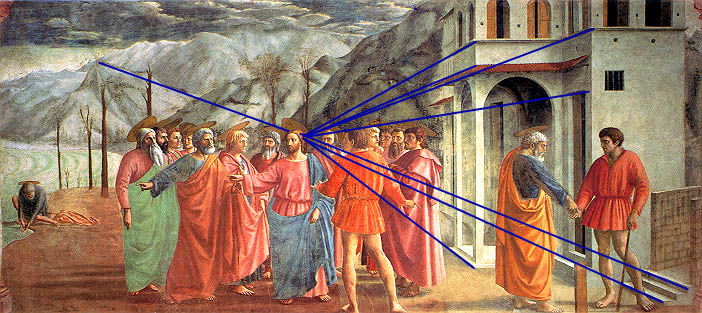
Since painting is a two-dimensional activity, the advent of linear perspective created a three-dimensional look through practice.
To achieve this, artists took a horizon line at eye level and marked a vanishing point on it. A receding checkerboard of intersecting lines was created that converged and met the vanishing point. This created a sense of distance and depth.
With constant practice, artists managed to create a three-dimensional effect in their paintings.
Not only did the art with linear perspective shoot high, but the ability to portray convincingly naturalistic figures in illusionistic spaces was praiseworthy too.
The mastermind behind the developments was the author of three mathematical treatises and a wonderful artist, Piero Della Francesca, whose perspective paintings and impressive figures showed technique and finesse. One such classic example of his work is The Flagellation of Christ.
4. Rebirth of Naturalism.
This is another characteristic of Renaissance Art that brought about change in world patterns.
At the period, there was the rise of anatomical drawings and paintings. The Italian Renaissance artist-Leonardo da Vinci pioneered this move. He set the standard for drawing and painting anatomically correct bodies. He birthed this out of his quest to thoroughly understand the human body. He did this by performing 20 autopsies while drawing all that he found in the human body, the way he saw them. He then incorporated what he learned of bone structures, musculature, and organ placement (from the bodies he drew or painted), into the body of knowledge.
Italian Renaissance artists integrated figures into complex scenes that permitted a broader perspective and a glimpse into the lives of the wealthy or rich.
Both light, shadow, and perspective were used effectively to draw attention to figures in paintings.
Leonardo Da Vinci was considered to be a scientist as well as an artist.
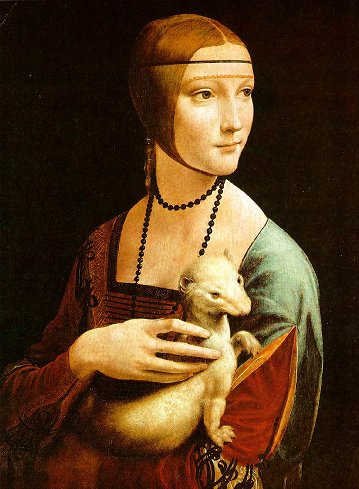
Leonardo Da Vinci and Michelangelo observed cadavers being dissected.
This was for them to study how human muscles lay underneath the skin.
In Medieval days, the human body was regarded as being sinful, smelly, and disgusting. And therefore, it was to be covered at all times.
But then, during the Renaissance period, this changed. Renaissance thinkers considered the human body to be a beautiful thing. And in fact, a model for God’s universe.
In Da Vinci’s 1487 drawing; “Vitruvian Man,” which meant “universal man”, he expressed how a spread-eagle human body, fits into a perfect circle. And he did this with its arms stretched out into a perfect square.
Michelangelo’s nude statue, “David” is a prime example of the Renaissance’s fascination with the human body. And its belief that the human body is the apex of God’s creation.
Michelangelo painted so many nude characters in his “Last Judgement”. He did this on the wall of the Sistine Chapel. And after a while, the Vatican had to hire another painter to paint modest clothes around his drawings, to cover many of the nude paintings.
5. Secularism
Secularism; which is the last characteristic I’ll dwell on, was also a useful force. It is the transition of predominant beliefs and thought patterns from religious themes to broader themes. And also the incorporation of practices such as architecture and sculpture. Renaissance artists portrayed non-religious themes, meanwhile, Medieval Art was exclusively religious in nature.
During Medieval times, most people believed the world would end in the year 1,000 A.D., so they believed that any other art subject was inappropriate.
Renaissance art focused on religious subjects, and Bible characters. So the trend gradually shifted toward the painting of scenes that were not religious.
One of the earliest Renaissance examples of a non-religious theme was van Eyck’s revolutionary “Arnolfini Marriage.” Jan van Eyck employed the art of depth and reflection by adding a mirror on the back wall. That way, the people that viewed the picture got a reflection of themselves in the view of the painting.

The interest in Classical Roman culture was rekindled during this period. Then, the Renaissance put forward artworks that often portrayed scenes from Greek and Roman mythology.
One of the evidence of the rebirth of the Greek and Roman culture was the revival of sculpture works.
In classical times, only the important cities were filled with statues and sculptures. But during the Renaissance, there was an increased interest in archeology, to rediscover the Classical culture. Michelangelo was present when the Laocoon; carved in the 1st century, was discovered in Rome.
Michelangelo was not only a painter and sculptor of great talent. He also served as the architect of the Dome for St. Peter’s Basilica in Rome. And this church building is acclaimed to be the largest church building on earth.
Final thoughts
Conclusively, the phase of Renaissance art had countless effects and a great impact on the way the world is now structured.
Painters and sculptors that emerged after this period of great innovations and developments, followed up on the new trends and even made out better designs and artworks. Well, as time passed, innovations proceeded and knowledge got more refined with every passing generation.
The teachings, learnings, and innovations of previous generations led newer ones to thirst after new breakthroughs. Breakthroughs that will typify their own generation. This then kept each person on their toes and helped them to discover and contribute more to the body of art.
Geniuses such as Leonardo da Vinci and Michelangelo contributed at a high level with their findings and innovations.
Other fields of expertise like Architecture were also not left out. Architecture and Art experienced a completely different lapse.
This phase in Architecture led to the rise in all of the beautiful designs that characterized the past centuries. Viewed as devotional objects of that time, the paintings are still adorned as great works of art. And it even birthed our present structures; the jaw-dropping ones which we now boast of today.
The principles of Renaissance art have no doubt, contributed immensely to the state of the world today. It taught us principles and ideals which have remained relevant, through and true.
And have transcended generations, while still strongly influencing our lifestyle and patterns in today’s world.
The 7 most famous of renaissance paintings
Why is Monalisa painting so famous?


